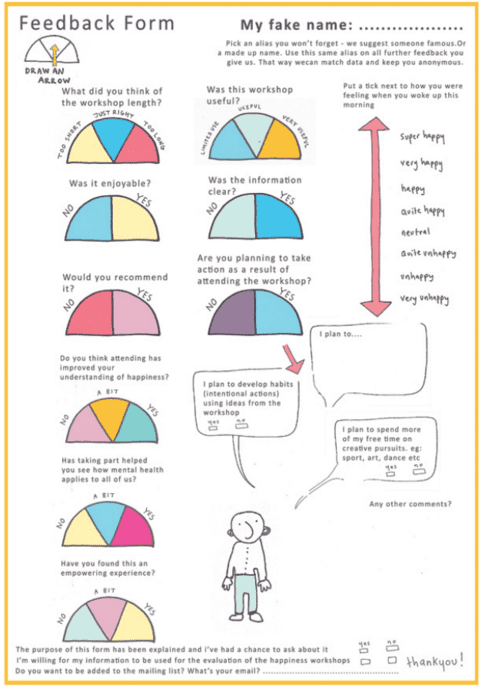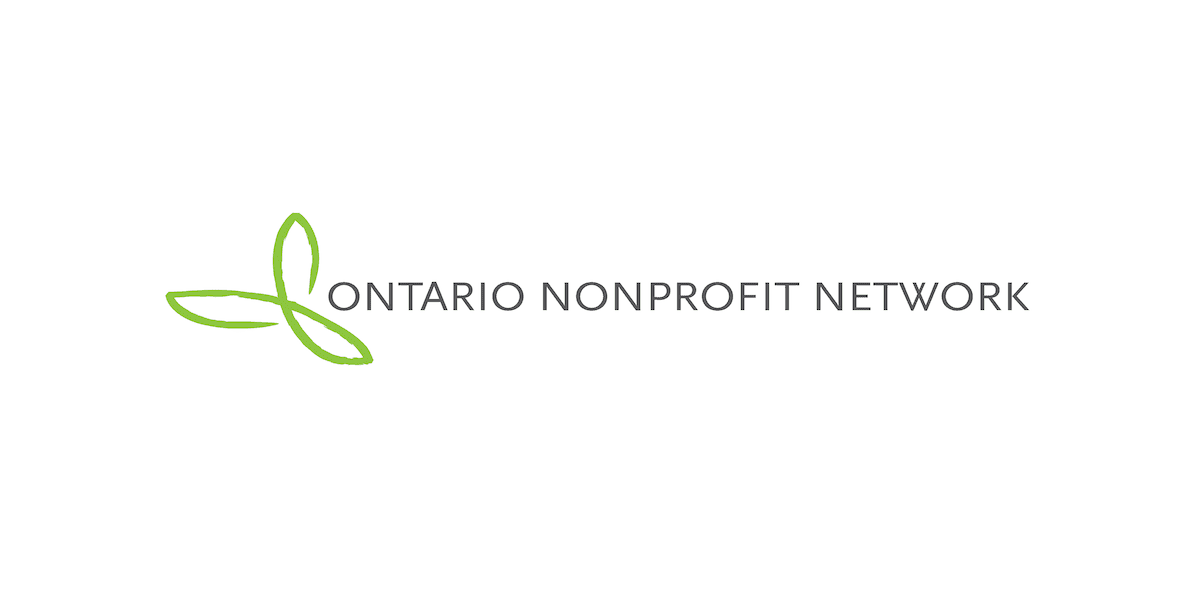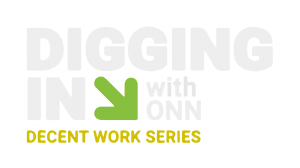
Blog
There’s an Art to It: Exploring Creative Evaluation
Using art in your evaluation process can help better engage your stakeholders, remove barriers and is a fun, useful process. Guest blogger Helen Yung explores creative approaches to evaluation.
When it comes to evaluation, one size never fits all. And, if conventional approaches to evaluation strike you as uninspired, formulaic, or ill-suited for your program or community, there are more creative options to explore.
Engaging an artist, designer or arts-based researcher can help better reflect the spirit of the experience you are evaluating, encourage the participation of those often not heard in the evaluation process, unearth new insights, and make space for other ways of learning.
 For instance, this questionnaire from the arts-in-health Happiness Project (page 50) is a compelling example of visual thinking applied to evaluation. The playful and colourful design elements are approachable and appealing, and they communicate that feedback is both welcome and appreciated.
For instance, this questionnaire from the arts-in-health Happiness Project (page 50) is a compelling example of visual thinking applied to evaluation. The playful and colourful design elements are approachable and appealing, and they communicate that feedback is both welcome and appreciated.
Subtle details in the design reflect the values, intention and purpose of both the project and the evaluation. For example, respondents’ thoughts and feelings in response to the questions are represented by a gauge that resembles a heat dial. This image suggests that good is an optimal zone rather than a perfect 10. For a workshop series on mental health, these details matter. Overall, the questionnaire’s look and tone is an extension of the project experience and not just an afterthought.
Similarly, Marianna Adams of Audience Focus Inc. writes about matching the evaluation method to the experience, citing an example where a museum hosting a special event took a creative route to finding out where its guests came from. Rather than circulating a post-event survey, the museum set up an oversized map and invited the guests to mark where they lived with colourful stickers. Maps from different nights could immediately be compared side-by-side. “It becomes a fun, social activity,” writes Adams. “People like to find themselves on a map.”
Alternatives to text-based assessment tools are limited only by the bounds of imagination. Creative evaluation strategies can employ photo, collage, video, simulation, dance, drama, storytelling, and more. Mypeer.org.au lists some common creative approaches to evaluation.
With unlimited possibilities in the creative use of materials within an evaluation context, the question becomes not what to use but what is appropriate. You’ll want to identify what kind of conversation you want to have, with whom, and why, then decide what mode of engagement best supports your goals. Working with a community-engaged artist with in-depth knowledge and experience can help ameliorate long-standing challenges around access, representation and power, and make your evaluation project more successful.
In an article entitled “You give us rangoli, we give you talk,” UK researchers describe how South Asian women, among other populations, are often dismissively labeled “hard to reach” and thus are not included in mainstream health research. Working with a local artist to develop its approach, the research team successfully engaged many of these seldom heard women with thoughtful, culturally appropriate choices around participant recruitment and research setting.
They then selected the traditional craft of rangoli as premise, backdrop and stimuli for bringing the target population into conversation. The craft workshops were friendly, disarming, novel, tailored to individual groups, and involved food-based materials that helped facilitate the desired conversations around food practices. The artistic collaboration enabled the research team to avoid collecting the kind of responses “which participants believe are the ones researchers want to hear and which reflect public health messages” and, instead, allowed them to listen in on the “lay theories” that are embedded in everyday conversation and routines.
Is it always necessary to work with an experienced artist, designer, or arts-based researcher? While not a must, it can be immensely rewarding to collaborate with a professional who can combine their know-how with your values in the planning and execution of co-designed evaluations. Professionals experienced in social practice, arts-based community engagement, and creative generative research have developed specialized knowledge that can help you make nuanced choices about equity and engagement.
Given the complexity of the issues and communities that nonprofits work with, a healthy mix of flexibility, sophistication and creativity in evaluation approaches is worth considering.





